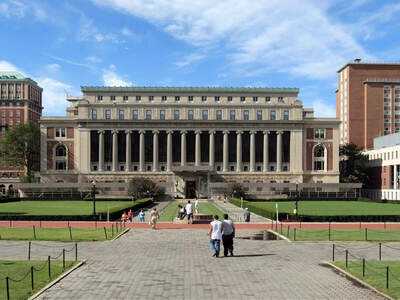Princeton and MIT bring back SAT/ACT: Why is Columbia still test-optional?
Columbia University has become the last Ivy League institution to maintain a fully test-optional policy , a move that sets it apart from its peers as the league reverses the trend of eliminating standardized tests . In recent months, Princeton announced that starting with the 2027 admissions cycle, students will once again be required to submit SAT or ACT scores.
MIT reinstated its requirement in early 2022, and Yale maintains a test-flexible system that still relies on standardized measures, making Columbia the sole holdout.
The decision has stirred debate over merit, fairness, and access in admissions. Princeton initially suspended standardized testing in 2020 due to COVID-19 and limited access to testing centers, but the policy persisted long after restrictions were lifted. The university has now recognized what many had already observed.
The Princeton admissions office said in a statement, “A review of five years of data from the test-optional period [found] that academic performance at Princeton was stronger for students who chose to submit scores than those who did not.
Why Columbia opted for test-optional admissions
According to a New York Post report, Columbia’s internal review found the test-optional policy had no negative impact on students’ academic performance.
In a statement released Wednesday, the university explained that its application was designed to provide students with flexibility, allowing them to fully showcase their abilities, while making standardized tests optional rather than mandatory. Columbia first suspended its testing requirement in 2020 and has continued to extend the waiver since then, as reported by Crimson Education.
Across the country, many universities adopted test-optional policies at the onset of the COVID-19 pandemic to simplify the application process. Yet several of the nation’s most prestigious institutions have made it clear that they do not intend to make these policies permanent.
Advantages of test-optional policies
Disadvantages of test-optional policies
Conclusion
Columbia University’s choice to remain test-optional highlights a tension between equity and traditional measures of academic ability. While the policy offers broader access and a more holistic evaluation of applicants, it also presents challenges in ensuring consistency and rigor. As Ivy League peers reinstate standardized testing, Columbia’s stance positions the university as a distinctive, if controversial, advocate for admissions reform in American higher education.

MIT reinstated its requirement in early 2022, and Yale maintains a test-flexible system that still relies on standardized measures, making Columbia the sole holdout.
The decision has stirred debate over merit, fairness, and access in admissions. Princeton initially suspended standardized testing in 2020 due to COVID-19 and limited access to testing centers, but the policy persisted long after restrictions were lifted. The university has now recognized what many had already observed.
The Princeton admissions office said in a statement, “A review of five years of data from the test-optional period [found] that academic performance at Princeton was stronger for students who chose to submit scores than those who did not.
Why Columbia opted for test-optional admissions
According to a New York Post report, Columbia’s internal review found the test-optional policy had no negative impact on students’ academic performance.
In a statement released Wednesday, the university explained that its application was designed to provide students with flexibility, allowing them to fully showcase their abilities, while making standardized tests optional rather than mandatory. Columbia first suspended its testing requirement in 2020 and has continued to extend the waiver since then, as reported by Crimson Education.
Across the country, many universities adopted test-optional policies at the onset of the COVID-19 pandemic to simplify the application process. Yet several of the nation’s most prestigious institutions have made it clear that they do not intend to make these policies permanent.
Advantages of test-optional policies
- Increased access: Test-optional admissions provide opportunities for students from underrepresented and lower-income backgrounds, removing a significant barrier to Ivy League acceptance.
- Holistic review: Admissions committees can focus on qualitative measures such as essays, recommendations, and leadership roles, offering a fuller picture of a student’s potential.
- Reduced stress and cost: Students face less pressure to perform on high-stakes exams and avoid the financial burden of multiple test attempts or prep courses.
Disadvantages of test-optional policies
- Subjectivity in decisions: Without standardized benchmarks, evaluations can become more subjective, potentially allowing biases to influence outcomes.
- Difficulty comparing applicants: Admissions officers must weigh diverse profiles without a consistent numerical measure, complicating comparisons.
- Concerns over academic preparedness: Critics argue that standardized tests help predict college success, and removing them may risk admitting students less prepared for rigorous coursework.
Conclusion
Columbia University’s choice to remain test-optional highlights a tension between equity and traditional measures of academic ability. While the policy offers broader access and a more holistic evaluation of applicants, it also presents challenges in ensuring consistency and rigor. As Ivy League peers reinstate standardized testing, Columbia’s stance positions the university as a distinctive, if controversial, advocate for admissions reform in American higher education.
Next Story